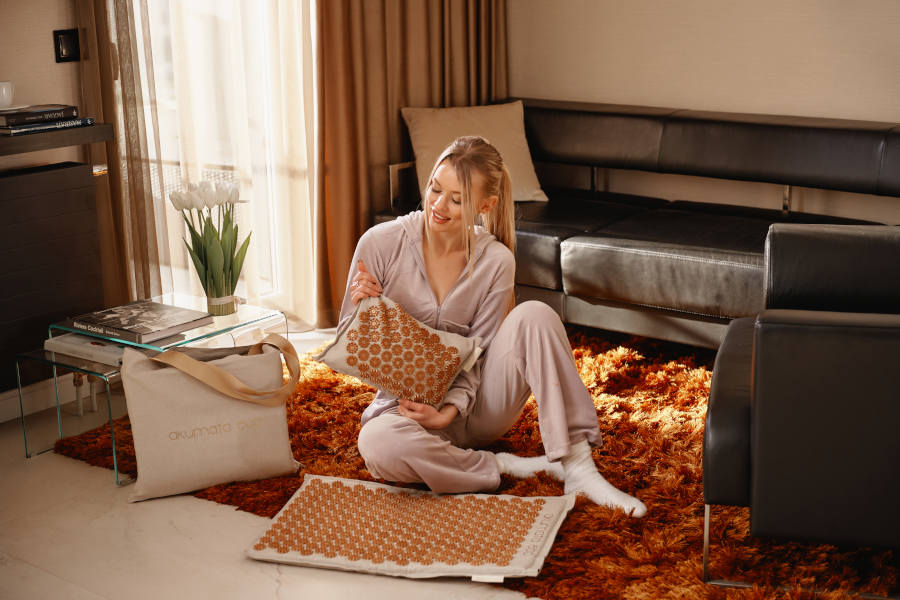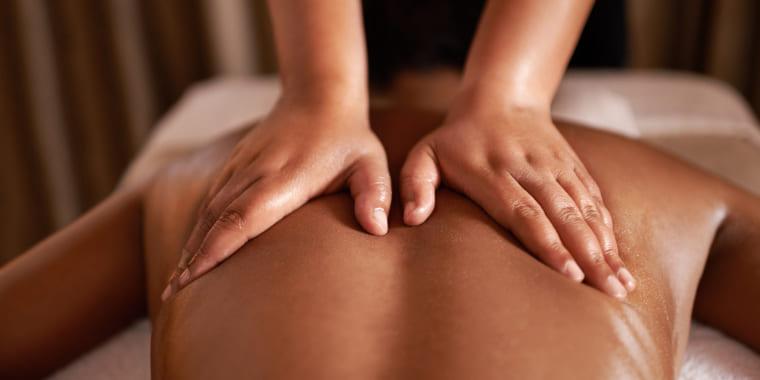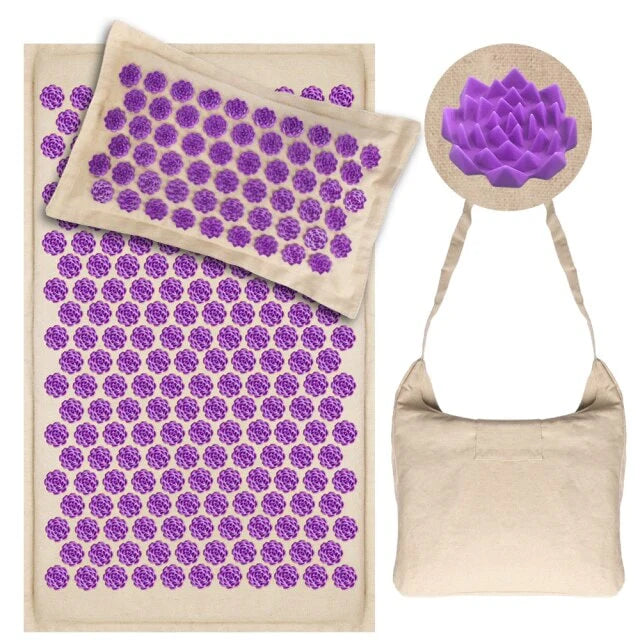What is Swedish massage?
Henrik Ling, a master fencer, developed the oil-based manual therapy known as Swedish massage in the 19th century. Learn more about this massage, its principles, techniques, history, advantages, how a session operates, how to become a therapist, and lastly, contraindications in this fact sheet.
Swedish massage, which is sometimes regarded as the most traditional type of bodywork, is a dynamic massage method intended to relieve stress and firm muscles and joints. Its energizing and calming effects promote lymphatic and blood circulation as well as the removal of pollutants, aiding the body in regaining its natural equilibrium.
The main principles
Long, smooth strokes are necessary for Swedish massage, a traditional oil massage (see techniques below). There are several theoretical foundations for this field of study. P.H. Ling, the field's founder, was inspired by Nordic peoples' theories of physiology, anatomy, and physical education.
He also drew on his expertise in movement as a great fencer and his familiarity with the ancient massage techniques employed by Greco-Roman medical gymnasts. The power of thinking over the body completed the fundamental principles of his strategy.
Swedish massage techniques
The technique comprises several basic maneuvers that have remained the same for generations:
- Effleurage: this maneuver often takes place at the beginning and end of the massage. It consists of slow, rhythmic movements in the direction of the heart to relax and prepare the individual for the other maneuvers.
- Kneading: performed with the pads of the thumbs and fingers, this maneuver aims to improve blood circulation and relax muscles. The body's supple tissues are stretched and kneaded in depth.
- Friction: Friction is the most powerful part of massage. It aims to soften tissues while breaking up knots. Here, the masseur uses his or her hand, fingers or thumbs to press the tissues in a circular motion.
- Percussion: percussion is the rhythmic striking of hands, fingers and fists. Starting slowly, the strokes accelerate as the massage progresses and then slow down.
- Vibration: vibrations stimulate nerve endings by applying gentle pressure to the tissues with the fingers and hands. This pressure causes rapid tremors that act on the nervous, muscular and lymphatic systems.
All of the muscles are worked deeply during these movements. They produce results akin to those gained through gymnastics when done in a certain order.
The benefits of Swedish massage
Many clinical studies have been conducted to evaluate the efficacy of Swedish massage. Unfortunately, a lot of them have only been published in Swedish, therefore we are unable to use them as research materials.
On the other hand, several English-language research suggest that this kind of massage may benefit a number of distinct illnesses. Furthermore, a large body of research supports massage's ability to treat a wide range of illnesses. See the massotherapy fact sheet for further information.
Reducing back pain
A 2009 systematic review evaluated massage's effectiveness in the management of back pain. The authors came to the conclusion that patients with acute (4–12 weeks) and chronic (greater than 12 weeks) back pain can benefit from Swedish massage.
It should be emphasized that this kind of massage works best when combined with fitness or educational initiatives.
Reducing post-operative pain and distress
The impact of Swedish massage on post-operative symptoms following laparotomy (abdominal incision) was investigated in a clinical research.
146 women received standard treatment on the day of the operation and during the next two days, standard care plus Swedish massage, or standard care plus vibration therapy (low-frequency sound and vibration).
According to the findings, Swedish massage had a small but non-significant impact on post-operative pain and suffering compared to the other 2 methods.
Contributing to well-being during bone marrow transplantation
Three different types of interventions Swedish massage, therapeutic touch, and a friendly visit were tested in a clinical experiment to determine their effects. 15 30-minute sessions in total were given to the participants.
The three groups' physiological issues were the same. Patients in the massage group, however, said that it was simpler to sleep, talk to their relatives, and feel less melancholy and anxious.
Reducing pain and tension among nursing staff
Massage therapy can be included into the hospital setting and has been shown in a pilot research to help with perceived pain and tension reduction. In order to achieve this, 4 to 8 15-minute Swedish massage treatments were given to 10 nurses and 2 supervisory staff members, with an average interval of 9 days.
A rise in relaxation and an improvement in general mood were also noted, in addition to the reduction of pain and tension. The lack of a control group, however, restricts the study's applicability because a 15-minute break could have achieved the same outcomes.
Relieving the symptoms of knee osteoarthritis
A pilot study on 68 participants with knee osteoarthritis assessed the effects of Swedish massage. Results indicated that these therapies could lessen discomfort while also increasing range of motion and functional capacity.
The authors come to the conclusion that Swedish massage seems to be a safe treatment, especially when used in conjunction with other traditional therapies.
Swedish massage - How it works
The specialist
Specialists in swedish massage can work in a variety of fields. In fact, resorts, hair salons, tanning salons, and beauty salons all frequently use this kind of massage. Swedish massage is also used in hospitals, clinics, and private practices.
Course of a session
An hour long Swedish massage treatment is typical. The massage therapist conducts a health evaluation at the initial consultation to make sure there are no medical conditions that would exclude receiving the therapy.
A naked or partially clothed person receives a Swedish massage on a massage table, while a fully clothed person receives one on a massage chair. The client's respiration serves as the therapist's guide. The therapist makes constant movements while applying oil or lotion.
To ensure that the full advantages may be reaped, the massage usually concludes with a rest period of varying length. Swedish massage has an impact on the neurological and circulatory systems in addition to its primary focus on muscles and joints.
Becoming a practitioner
There isn't a recognized institution for Swedish massage education. Professional associations, on the other hand, make sure that high standards are met in both practice and training.
In addition to being covered in training programs for physiotherapy, orthotherapy, hydrotherapy, and sports massage, Swedish massage is taught in massage therapy schools.
Training typically lasts 165 hours in Quebec. The method is covered in a 400-hour massage therapy practitioner degree program. Some businesses in France provide three-day, 21-hour training programs.
Contraindications of Swedish massage
Although massage is typically thought to be very risk-free for the majority of people, there are a few contraindications that should be noted.
For instance, certain studies show that massage can drop heart rate and raise blood pressure; therefore, when given to individuals who are sensitive to these changes, it should be preceded and followed by an evaluation of these parameters.
It is best to seek medical counsel for circulation issues (such as phlebitis, thrombosis, and varicose veins), cardiac issues (such as arteriosclerosis, hypertension, etc.), and diabetes.
Additionally, you should avoid massaging any areas where you have an infection, a fresh or healing lesion, acute inflammation, or bruising.
A brief history of Swedish massage
The Swedish physician, educator, and poet Per Henrik Ling1 (1776–1839) is credited with creating Swedish massage
However, Svenska Gymnastikens, Ling's "Swedish" style of gymnastics, is what makes him most well-known. At the Royal Gymnastics Central Institute, the first gymnastics school he created in Stockholm in 1814 and operated there until 1836, he taught it
Due in part to his son Hjalmar, who carried on his teachings, Swedish massage did not become widely known until 1900.
But most importantly, acknowledgement must go to British doctor Mathias Roth, who fought back against Ling's critics by writing the first book on the subject to be published in English
If we had listened to P.H. Ling, today's term for his approach would be "passive patient exercises" because he thought the term "massage" was too general to describe it
Wherever Scandinavian immigrants settled, Swedish massage became well-established in America in the early 20th century. It is currently the most well-liked style of massage in both the USA and Europe.








